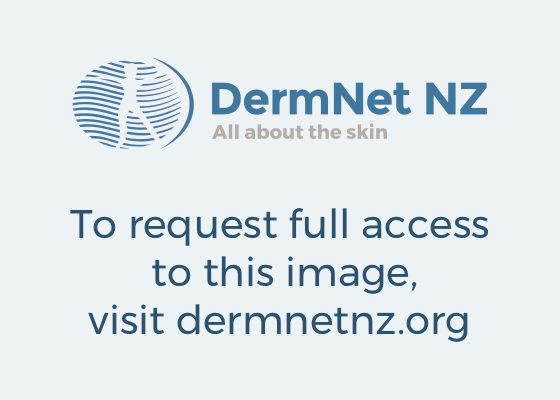What is oral leukoplakia?
Oral leukoplakia is the most common premalignant or potentially malignant disorder of the oral mucosa.
It is defined as a white patch or plaque of the oral mucosa that cannot be characterized clinically or pathologically as any other disease.
Oral leukoplakia is a clinical diagnosis of exclusion. Diseases to be excluded include nicotine stomatitis, candidiasis, lichen planus, frictional keratoses, habitual cheek or lip biting, lupus erythematosus, etc.
Who does it affect?
Oral leukoplakia may affect about 0.5% of the world population, although it is likely to vary with gender, geography and ethnicity.There is a strong association with tobacco smoking (six times more common in smokers than non-smokers) and alcohol intake (independent of drinking pattern or beverage type). It is also associated with betel quid chewing and oral submucous fibrosis.
It usually appears in adult life with prevalence increasing with increasing age:
- found in less than 1% of men under 30 years of age
- 8% of men over 70 years of age
- 2% of women over 70 years of age
- rare before age 30, peaks after 50 years
- mainly affects middle aged to elderly men
- non-smokers are likely to present at an older age.
Clinical features of oral leukoplakia
An early lesion is a slightly elevated grey-white plaque either well defined or which blends in gradually with surrounding mucosa. It can be a localised solitary lesion or multifocal and diffuse.Two clinical forms are recognised.
1. Homogeneous – refers to homogeneous uniform colour AND texture
- uniform white colour
- uniform flat, thin appearance
2. Non-homogeneous – refers to irregularity of either the colour OR the texture
- predominantly white or white-red (erythroleukoplakia)
- irregular texture which can be flat, nodular, exophytic, warty
The most common site affected is the inside cheeks (buccal mucosa) and then in decreasing order of frequency:
- gums (alveolar mucosa)
- lower lip
- floor of mouth (under tongue)
- sides or undersurface of tongue (lateral or ventral tongue)
- soft palate
How is the diagnosis made?
- Biopsy of clinically suspected oral leukoplakia is mandatory to: exclude recognised diseases, and to assess for the absence or presence and grade of dysplasia.
- It is appropriate to wait 2 weeks after first presentation to assess clinical response to initial treatment, e.g. for candida, change in tooth brushing habit, cessation of smoking, etc
- The biopsy may be incisional or excisional, single or multiple and may be done under local or general anaesthetic depending on site, number of biopsies required and type of biopsy.
- Biopsies should be taken from either a symptomatic area, or if asymptomatic then from red or indurated areas.
- The presence of dysplasia, carcinoma-in-situ and invasive carcinoma cannot always be predicted clinically.
 |  |  |
Treatment of oral leukoplakia
It is not known if early active treatment prevents the possible development of squamous cell carcinoma and there is a high recurrence rate after treatment.- Avoid aggravating habits eg quit smoking, and
- Surgical excision, or
- CO2 laser – excision or vaporisation.
- Possible other options – retinoids (acitretin or isotretinoin), photodynamic therapy.
- 3-12 monthly clinical checks
- Biopsy of suspicious changes
source: http://dermnetnz.org/site-age-specific/oral-leukoplakia.html
References:
- Dermatology. Ed. Bolognia, J et al. 2nd edition 2007. Mosby.
- van der Waal, Isaäc . Potentially malignant disorders of the oral and oropharyngeal mucosa; terminology, classification and present concepts of management. Oral Oncology 45 (2009) 317–323. Medline.
But Dr. Itua, Traditional Herbal Practitioner in Africa, has cured HIV which is extracted from some rare herbs. It is highly potential to cure AIDS 100% without any residue. Dr Itua herbal medicine has already passed various blogs on how he uses his powerful herbs to heal all kinds of diseases such as. Herpes, HIV,,Cushing’s disease,Heart failure,Multiple Sclerosis,Hypertension,Colo_Rectal Cancer, Diabetes, Hepatitis,Hpv,Weak ErectionLyme Disease,Blood Cancer,Alzheimer’s disease,Bechet’s disease,Crohn’s disease,Parkinson's disease,Schizophrenia,Lung Cancer,Breast Cancer,Colo-Rectal Cancer,Blood Cancer,Prostate Cancer,siva.Fatal Familial Insomnia Factor V Leiden Mutation ,Epilepsy Dupuytren's disease,Desmoplastic small-round-cell tumor Diabetes ,Coeliac disease,Creutzfeldt–Jakob disease,Cerebral Amyloid Angiopathy, Ataxia,Arthritis,Amyotrophic Lateral Scoliosis,Fibromyalgia,Fluoroqquinolone Toxicity,Brain Cancer,Breast Cancer,Lung Cancer,Kidney Cancer,Syndrome Fibrodysplasia Ossificans ProgresS sclerosis,Seizures,Alzheimer's disease,Adrenocortical carcinoma.Asthma,Allergic diseases.Hiv_ Aids,Herpe ,Copd,Glaucoma., Cataracts,Macular degeneration,Cardiovascular disease,Lung disease.Enlarged prostate,Osteoporosis.Alzheimer's disease,Dementia.,Wart Remover,Cold Sore, Epilepsy, also his herbal boost immune system as well. I'm telling this because he uses his herbal medicine to cure me from hepatitis B and HIV, which I have been living on for 9 months now with no side effects. Herbal Medicine is just as good when drinking it although i have to use the restroom after drinking it which I don't really care about because i just want to get the virus out of my body, I will recommend Dr Itua to anyone sick out here to contact Dr Itua with this following information.Email...drituaherbalcenter@gmail.com /
ReplyDeleteWhatsapp Or Call...+2348149277967.
He might be late to respond because he is always busy with patents, but he will surely get back to you with a positive response.
Thanks a lot for sharing this amazing knowledge with us. This site is fantastic. I always find great knowledge from it.Genesis Dermatology
ReplyDelete